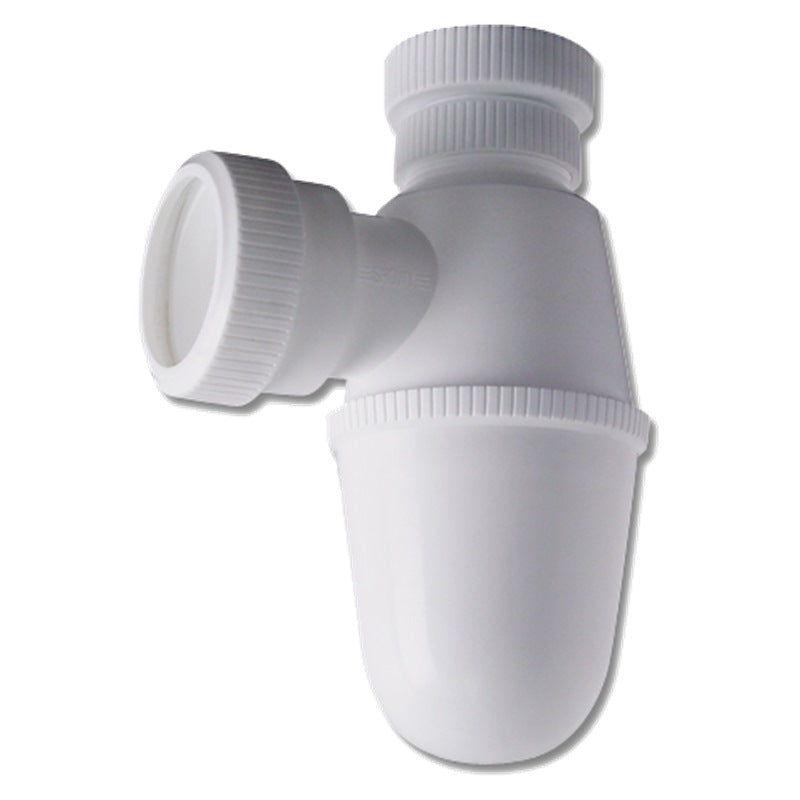What is a bottle trap

A bottle trap is a plumbing component fixed under sinks and urinals to maintain a water seal in your sanitary plumbing system to prevent foul air from entering your living space from within the discharge pipes. It is the standard plumbing trap used. There are also U, S, and P traps.
Its name is derived from its bottle-like shape, which consists of a cylindrical body that can usually be twisted open in the middle. The primary function of this device is to retain a consistent amount of water, creating a barrier against the entry of sewer gases into living spaces through the fixture while permitting wastewater to flow through.
What does a bottle trap look like?

Bottle traps are made of metal or plastic, and includes an inlet on the top where wastewater from the fixture enters, an outlet directing the wastewater from its side to a waste pipe, and an access cap at the bottom which facilitates cleaning and the removal of debris. While there are variations in the design, such as adjustable bottle traps that allow for height modifications, the fundamental principle remains consistent.
Is a bottle trap necessary?
The code of practice on sewerage and sanitary works states that all sinks and washbasins must have a fitting trap or bottle trap installed at the outlet before connecting to a waste pipe. And the waste pipe shall be connected to the floor trap above the water seal.
Effectiveness of bottle traps
If a fixture remains unused for extended durations, the water in the trap can evaporate, breaking the seal and potentially allowing sewer gases to permeate the living space. Thus, regular usage or manual water addition is crucial. Maintenance is also essential, as a bottle trap can be prone to blockages if not cleaned periodically. This is the reason a lot of sinks drain slowly.
In Singapore, the plumbing regulations stipulate that the waste pipes of sinks and washbasins must be linked to a floor trap. This floor trap is equipped with its own water seal. Consequently, if a sink remains inactive for prolonged periods, leading to the evaporation of its water seal, the floor trap's seal acts as a secondary barrier. The continued use of other fixtures, such as showers, ensures the maintenance of this secondary seal, thereby preventing the intrusion of sewer gases into residential spaces.
Do you need a licensed plumber to replace a bottle trap?
No. The Public Utilities Board (PUB) has confirmed that you do not need a licensed plumber to replace the bottle trap installed below your washbasin or sink. You can contact any skilled plumber to help remove, install, or replace your bottle trap.
While it might preferred for all plumbing works to be carried out by licensed plumbers, there are not enough of them active to address the plumbing needs of every household.
Our team of qualified plumbers operate under the supervision of a licensed plumber. This ensures that all our procedures and actions adhere strictly to the established rules and regulations.
